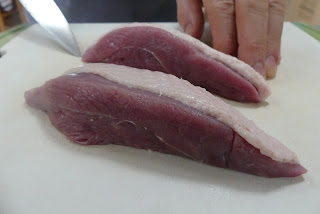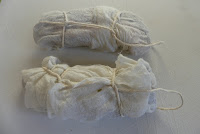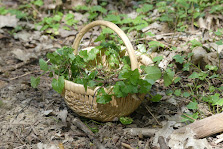
I've had my ProQ cold smoker for a few years now and it's something I use often, the smoke marks inside are testament to this. My love of this compact piece of kit was born from attending a Coldsmoking.co.uk course a few years ago.
They have kept their online shop and now stopped their physical courses in favour of building their Youtube platorm with instructional stuff. I was due to attendant a charcuterie day until you-know-what took it down and part of the day was talking about air-dried duck breast. They have now moved online and have a great Youtube channel and one thing that they have posted is how to do cured and smoked duck breast.
I'm actually not a fan of duck, outside of the crispy one you get in Chinese restuarants, but equally I recall trying a Venison version of this and liking it so caution to the wind I gave it a go. I double checked the information needed on the three part video and got going.
Turan (the guy who runs Coldsmoking) used citrus zest, Thyme and Juniper berries but I decided on Chinese style flavourings because as I've mentioned it's what I usually have. I went for a teaspoon-and-a-half of five spice powder, a little grated ginger and a small amount of oyster sauce with the sea salt, the idea being if the duck wasn't to my taste, or more probably my family's then I could pan fry it and have the afore mentioned pancakes.
I took the tried and tested route of purchasing a couple of skin on, de-boned breasts from a supermarket.
The breasts both had the thicker fat, plus 'flappy bits' trimmed and were then carefully dried in kitchen towel.
This is the pair of breasts having had the trimming and drying finished and are now ready for the marinading.
I mixed the pre-measured salt and spices together in one bowl with a teaspoon.
Once I'd applied the oyster sauce (literally enough to cover the breasts) I then applied the dry mix, which stuck to the sauce rather well!
After the mix was applied to the flesh and a little to the skin (75%:25%) I popped it in a vacuum sealer bag to maximise the contact between breast and flavourings and popped it in the fridge for 24 hours.
Even at the halfway mark it was clear to see how much liquid had been drawn out into the vacuum bag.
Once removed the breasts were washed to remove the salt and mix and again patted dry ready to be covered.
I cut and trimmed a sheet of muslin to individually wrap the breasts up and used the classic butchers/ parcel knotting to secure them with a hanging loop for the drying process.
The weather at the time was really chilly so I could alternate hanging them for around five days between my garage and outside utilising a screw in my fence which was better than having to hang them in an improvised way in my fridge.
When the time was up they both had a very definate look and feel of bacon about them (bacon blog how to here and video how to here), not surprising seeing as the process is similar. And so onto the cold smoking which had mentioned earlier on. I did about four hours smoking with oak dust. Again note the bacon-like appearance of the meat.
Another mention of bacon as I started cutting it: Surprise, surprise it cut like bacon.
Using a sharp kitchen knife meant that I could get some respectably thin slices out of the two breasts. So the taste, the family varied between a flat refusal to putting a couple of molecules past their lips and to be fair it's not something that I think I would redo, having bacon on the brain meant that I rather focused on the texture in the mouth.
So as you can possibly guess the meat became very posh Chinese panckakes!























































